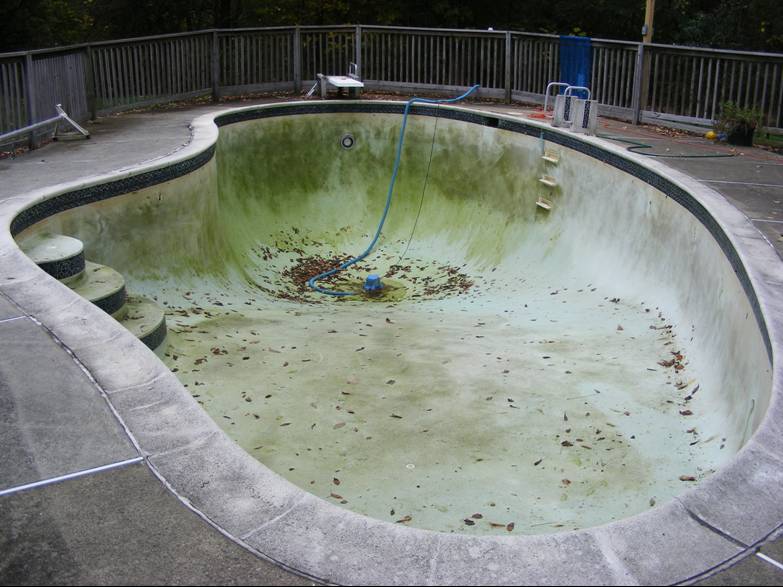
Staining is a detraction from the overall appearance or aesthetics of the pool, as well as an annoyance. Colored stained walls, floors, steps and other underwater surfaces can result from the untreated presence of heavy metals, such as iron, manganese and copper, in the pool water. These metals can occur naturally in water (especially well water) or may have been introduced into the pool water, as a result of corrosion.
Copper algaecides are usually in a chelated or stabilized form and are not normally a problem, when used properly as directed. However, the use of ionization products can result in the addition of too much copper and result in staining and or discoloration. Pool stain and discoloration removal can be accomplished with the proper materials and techniques. The products, pictures above, will help you solve these problems. New or freshly resurfaced masonry pools can be more susceptible to staining, until the underwater surfaces have “cured” and come to equilibrium with the pool water.
Stain avoidance treatment should be considered, whenever a water analysis indicates the potential for a pool staining problem. If possible, test the source water before it is added to the pool, as it is best to add mineral treatments prior to the addition of oxidizers (chlorine, bromine or shock) or the pH and/or total alkalinity are increased. An alternative method of dealing, with pool water containing known heavy metal problems, is to use the METALTRAP Filter, which can physically remove the metals, as the pool water is being added. When the new water contains sediments, as well as dissolved metals, it is best treated with a METALTRAP Dual-Cartridge Filters, which keeps out both precipitated and dissolved forms of iron, copper and manganese.
